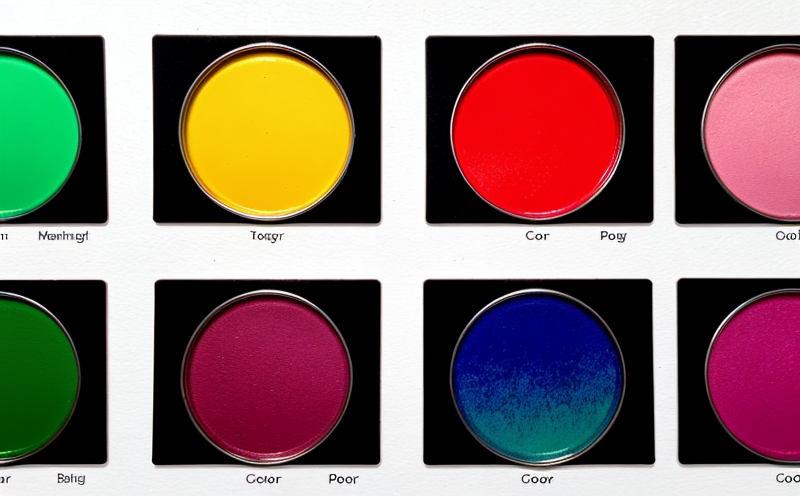IEC TR 62778 Blue Light Hazard Spectrum Testing of Luminaires
The IEC TR 62778 standard provides a comprehensive approach to the evaluation and testing of luminaires with respect to blue light hazard (BLH). This test is critical for ensuring that luminaires do not emit excessive levels of blue light, which can cause discomfort or damage to human eyes. The standard is widely recognized in various sectors including lighting design, manufacturing, and retail.
The primary purpose of IEC TR 62778 Blue Light Hazard Spectrum Testing is to assess the potential for photobiological hazards associated with exposure to blue light from luminaires. This includes evaluating the spectral power distribution (SPD) of the luminaire within a specific wavelength range, typically between 380 nm and 500 nm.
During this testing process, specimens are carefully prepared by removing any external components that might affect the measurement accuracy. The luminaire is then placed in an appropriate test chamber where it can be illuminated under controlled conditions. Specialized spectroradiometers are used to measure the spectral power distribution of the emitted light. The data collected from these measurements helps determine whether the luminaire complies with the specified limits for blue light hazard.
The acceptance criteria for IEC TR 62778 Blue Light Hazard Spectrum Testing are based on internationally recognized standards such as ISO/TR 15930-4 and IEC/TS 62788. Compliance ensures that products meet safety requirements set forth by regulatory bodies around the world.
The importance of this testing cannot be overstated, especially in environments where prolonged exposure to artificial lighting is common, such as offices, schools, hospitals, and homes. By adhering to IEC TR 62778 Blue Light Hazard Spectrum Testing protocols, manufacturers can help protect consumers from potential health risks associated with excessive blue light exposure.
For those involved in quality management, compliance officers, R&D engineers, or procurement professionals working within the lighting industry, understanding and implementing these testing procedures is essential. It allows for informed decision-making regarding product design and development, ensuring both safety standards are met while also meeting market demands.
Applied Standards
The IEC TR 62778 Blue Light Hazard Spectrum Testing of Luminaires aligns closely with several international standards that govern the evaluation and certification processes for lighting products. These include:
- IEC/TS 62788: This document provides guidance on how to determine photobiological safety classification based on spectral power distribution.
- ISO/TR 15930-4: It offers information about the relationship between luminaires and their influence on circadian rhythms, which indirectly affects blue light hazard considerations.
- Illuminating Engineering Society (IES) LM78: Although not directly related to IEC TR 62778, it provides supplementary guidelines for photobiological safety classification of lamps.
These standards work together to provide a robust framework for assessing the potential photobiological hazards posed by luminaires. By following these guidelines, manufacturers can ensure their products comply with relevant regulations and meet customer expectations regarding product safety.
International Acceptance and Recognition
The IEC TR 62778 Blue Light Hazard Spectrum Testing is widely accepted across numerous countries worldwide due to its rigorous nature and alignment with global health and safety standards. Countries that have adopted this standard include:
- Australia: The Australian Standards Association recognizes the importance of photobiological safety in lighting products.
- European Union (EU): Many EU member states have incorporated IEC TR 62778 into their national regulations, ensuring consistent application across borders.
- United States: The U.S. Department of Energy has referenced this standard in its guidelines for energy-efficient lighting systems.
Beyond these regions, many other nations have also adopted or are considering adopting IEC TR 62778 as part of their national standards. This widespread adoption underscores the importance of this testing method and highlights its role in promoting global harmonization in lighting product safety.
Use Cases and Application Examples
The IEC TR 62778 Blue Light Hazard Spectrum Testing finds application across various industries where lighting plays a crucial role. Some key sectors include:
- Healthcare Facilities: Hospitals, clinics, and other medical facilities often have long periods of continuous artificial lighting. Ensuring compliance with IEC TR 62778 helps minimize risks to patients and staff.
- Offices and Workplaces: Long hours spent in illuminated environments make offices ideal candidates for thorough blue light hazard assessment. Employers can use this testing to create healthier working conditions.
- Education Institutions: Schools and universities rely heavily on artificial lighting during daylight savings time when natural sunlight is limited. Proper testing ensures that students are not exposed to harmful levels of blue light.
- Residential Lighting: With increasing awareness about the impacts of blue light, residential lighting manufacturers can use IEC TR 62778 to differentiate themselves in the market by offering safer alternatives.
In addition to these specific applications, any organization dealing with large-scale installations of luminaires should consider implementing IEC TR 62778 Blue Light Hazard Spectrum Testing. This ensures that all aspects of lighting design and implementation are aligned with established safety protocols.





